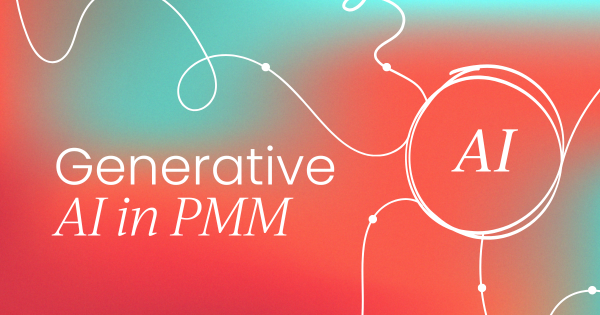To say generative AI has been a hot topic of late is an understatement.
I'm sure you’ve had tons of conversations about it with friends and colleagues alike. The question isn’t “Are you doing anything with generative AI?” but rather “What are you doing with generative AI?”
So, let's dive into how this revolutionary technology is reshaping the landscape for product marketers. In this article, we'll explore:
- Intriguing real-world applications of generative AI across industries, from smart toothbrushes to personalized in-car music composition.
- The global economic impact generative AI is projected to have, and why it's being adopted so rapidly compared to previous AI technologies.
- Three high-impact use cases where IBM is deploying generative AI solutions for clients, showcasing its potential in areas like productivity, customer service, and application modernization.
- The key considerations product marketers must grapple with as we embrace generative AI, including choosing the right models, ensuring data quality, and prioritizing ethical governance.
By the end, you'll have a deeper understanding of generative AI's transformative possibilities as well as a clear roadmap for strategically implementing it within your product marketing roles and responsibilities.
Let’s get into it.
Popular generative AI apps
Let me start by sharing some interesting AI use cases I've heard about.
There's a toothbrush by Oral-B that apparently has AI to help you clean your teeth better by giving feedback as you brush.
Then there's a partnership between Bentley and LifeScore to compose music. They have a model embedded in the vehicle that creates a soundtrack adapted to your driving scene - like a personalized movie score!
Here’s a surprising one: in Germany and South Korea, pastors are using ChatGPT to create messages and provide spiritual counseling, though some report feeling spiritually unfulfilled by the service.
For animal lovers in Japan, there's an app that can detect pain in your cat with 90% accuracy. It already had 43,000 users a month after its launch in 2023!
One of my coworkers told me that their son used ChatGPT to write an essay. The kid even had the wherewithal to ask the bot to make its writing sound like a 12-year-old's – my colleague wasn't sure whether to be impressed or upset!
Suffice it to say, people are coming up with all kinds of weird and wonderful applications for AI – but what does this mean for us?
The global impact of generative AI
One of the major impacts we'll see with generative AI is the global economic effect.
According to Gartner, 80% of enterprises are working with or planning to leverage foundation models or generative AI within their business processes. What’s more, Goldman Sachs estimates that generative AI could raise global GDP by 7% within 10 years.
To give you an idea of how rapidly generative AI has taken off, ChatGPT hit 100 million users within just two months of its release. For context, it took Instagram 30 months and Uber 70 months to reach that milestone.
So, what makes generative AI so different from previous AI tech? Three key things:
- Accessibility: It's no longer just machine learning engineers and AI teams building these models behind the scenes. Generative AI is available to all of us.
- Augmentation: There’s a widespread fear that generative AI will replace human capabilities. However, I think the right way to view generative AI is as an augmentation of our abilities.
- Cost: While advanced models can get very expensive, generative AI is initially very accessible cost-wise, making it much easier to adopt.
Three high-impact use cases of generative AI at IBM
Here’s the big question: beyond experimentation, what does generative AI mean for businesses? To answer this question, I’ll share some high-impact use cases IBM is implementing with clients, and explore the key considerations for us as product marketers.
Productivity
One major repeatable use case is around productivity. In digital talent and HR functions, we're seeing a lot of clients use generative AI for automation in areas like performance management and talent acquisition – essentially outsourcing to AI models and apps.
Customer service
Another major use case is around customer care and service – something most of us have encountered. If you've visited the Product Marketing Alliance website, you may have seen Hannah's AI chatbot pop up to offer assistance.
This brings up another interesting point – chatbots have been around for a while, so what makes chatbots powered by generative AI different?
Well, older chatbot models, which used machine learning, were trained on a specific use case with a limited set of questions and responses. Anything outside that corpus had to be handed off to a human. Today’s generative AI models are more responsive and nuanced. They can better understand context, so resolutions happen at a much higher rate with little need for human intervention.
App modernization
A third high-impact area for IBM is application modernization. Many organizations today are taking advantage of AI for code generation, refactoring, and re-architecting.
Marketing use cases for generative AI
Now, you may be wondering – what about marketing-specific use cases? Don’t worry – I’m getting to them now.


















 Follow us on LinkedIn
Follow us on LinkedIn




.svg)